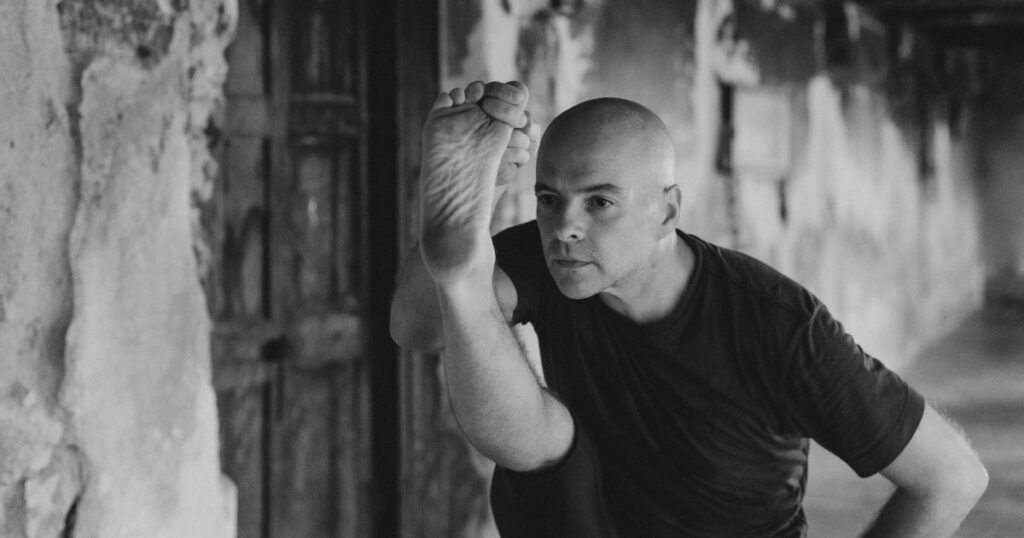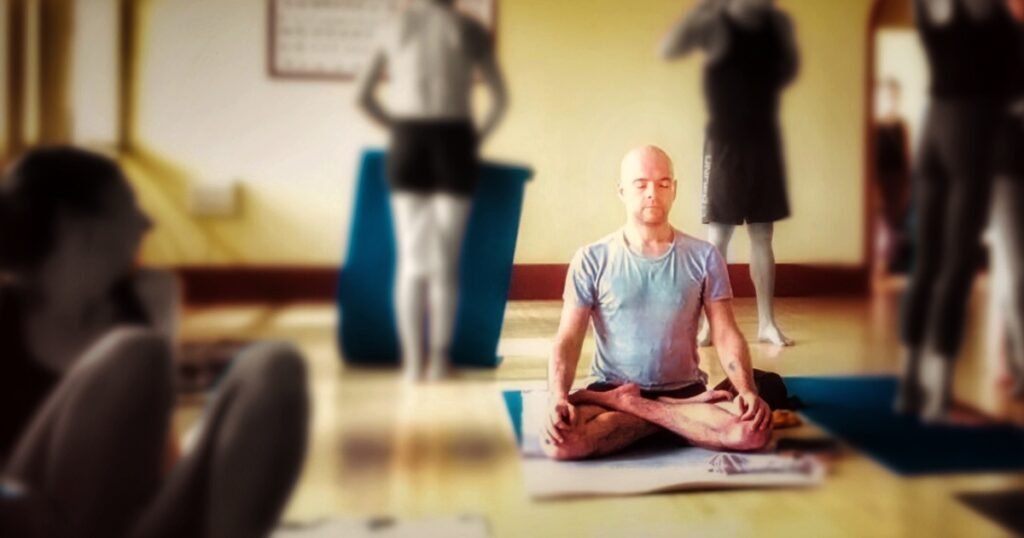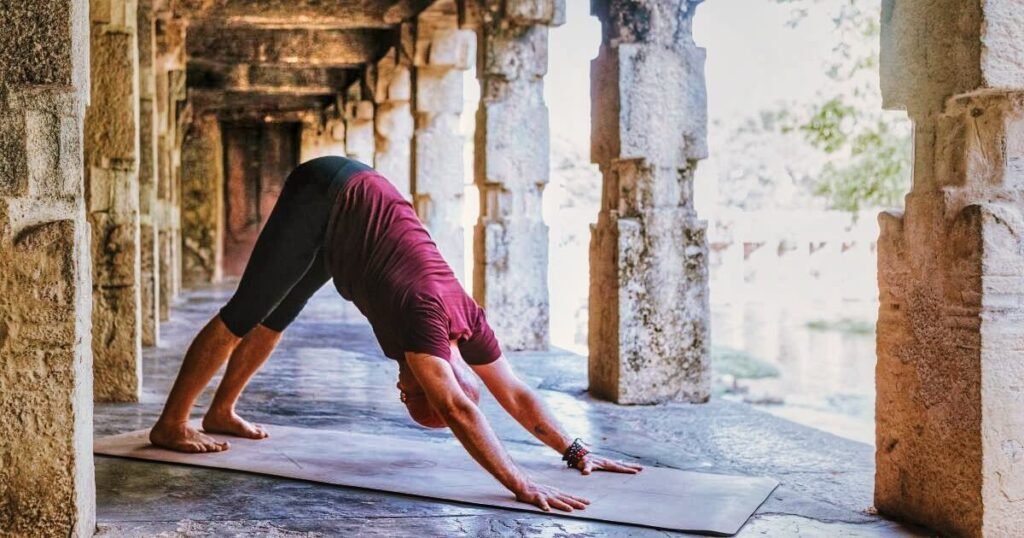Each asana is a door. Some open towards the body, others towards the mind.
Each posture speaks to me in a different way. Sometimes it challenges me, other times it soothes me.
The Invisible Journey Between Second and Third Series… Waiting, Listening, and Transformation
Mysore, a few years ago — just another day in the shala, it must have been around 10:30 AM. I had done my practice, assisted my teacher in helping other students with theirs. Then I went out for breakfast.
I realised it had been a while since I’d been practising the full Second Series and was waiting to be given the first posture of the Third. No, I knew it well — it had been four months since I completed Second Series.
Four months in Mysore, immersed in daily practice, dedication, study, and assisting in the shala.
You’re just not supposed to do that… and in fact, I had never done it before — nor have I ever done it since.
But that day, I went back into the shala and, while chatting casually with my teacher, I slipped it in:
“So… the next posture?”
His words made me realise that my practice was becoming more advanced than I thought. But not because my body could take on “Instagrammable” shapes.
“I thought you would’ve come to ask me a couple of months ago.” That was how he began his reply.
For me, it was a kind of confirmation that I wasn’t attached to the asanas — that my practice was going beyond the physical postures alone.
Spending years in an Ashtanga shala in Mysore means facing, every day, bodies, minds, and stories very different from one another, coming from all over the world. Sometimes they inspire. Other times, they challenge.
I’ve never been particularly attached to asanas, nor drawn to physical acrobatics — partly because I’m neither flexible nor naturally gifted. I returned to yoga as an adult, past my thirties, driven more by a spiritual search than physical ambitions. And it was with this approach that I came to Ashtanga Vinyasa Yoga.
Just like in life, on the mat it’s sometimes hard not to look around. It’s hard not to compare.
So it can happen that you sense an apparent gap: that posture that took you years to digest, someone else passes through with grace and ease on their first try.
It’s not just a physical thing: it’s the invisible trajectory of experience.
I remember a young man who arrived at the shala, probably having practised only by watching a few online videos. While I was assisting him during Utthita Hasta Padangusthāsana, he lifted his leg well beyond bringing it in front of himself, up to a full vertical split, effortlessly. And he asked me:
“But how should I do it?”
The perfection of the movement was there, but the question revealed everything.
An asana is not the destination. It is a passing point.
Some come from far away and have already travelled a long way – perhaps not only in this life.
We see only a fragment of that journey. As if we stood still in one spot watching the flow of a river. But that river, deep down, is ours too.
Comparison, when conscious, can nourish. It can inspire. Help us recognise the path already travelled or sense the one ahead.
But when it comes from a sense of insecurity, it can turn into poison. It feeds jealousy, envy. A subtle voice sneaks in whispering:
“I will never be enough.”
And so, even after years of practice, a sense of inadequacy can arise. Not only related to the body. Something deeper: the doubt of not being worthy, not measuring up, not deserving one’s place – on the mat or in life.
It’s a silent but persistent thought. A constant self-criticism that makes us forget how many steps we have already taken.
But precisely in that moment of friction, from that critical gaze that initially wounds, something precious can emerge.
Because that fragility is not a mistake on the path: it is the path itself.
Yoga, like life, doesn’t ask us to be perfect, nor to achieve external milestones.
It asks of us presence. Continuity. Honesty.
And so every difficulty, every comparison, every doubt can turn into an opportunity for growth.
Daily practice becomes fertile ground for self-observation and transformation.
Not growth understood as an accumulation of successes, but as a gradual liberation from what separates us from ourselves.
Understanding where our actions come from. Seeing more clearly.
In this sense, comparison becomes a mirror: not to judge, but to recognise.
To recognise our own path, our wounds, the qualities we are nurturing.
And to recognise in others not a benchmark, not rivals, but fellow travellers, each with their own invisible journey.
This way, even the feeling of inadequacy can dissolve.
Not because we have finally achieved something.
But because we have learned to stay.
To feel that who we are, here and now, is already enough.
Even when things don’t move forward.
Even when it feels like we’re not enough.
Sometimes, it’s enough to look at ourselves with the same eyes we use to observe a blooming meadow:
no flower is out of place. Some blossom earlier, others endure longer.
The beauty of one does not overshadow the other.
They simply coexist. And bloom, each in their own way—unique and irreplaceable.
Meanwhile in India, the days keep passing, the weeks, another four months…
Mysore, a few years ago. Just another day in the shala, it must have been around 7:30 AM.
I am finishing the last asana of the Second Series.
My teacher looks at me. He signals me to wait.
A new posture is assigned to me.
There is no solemnity, no applause, no fanfare. Just that essential, bare gesture, which in its simplicity says it all:
It’s never just about the posture.
It’s the journey that prepares you.
It’s the daily practice — silent, imperfect, stubborn — that builds the space where something can be received.
Not as a reward.
Not as an achievement.
But as a seed.
The rules of Ashtanga are not cages: they are tools.
Rigour is not punishment: it is a container.
But if we lose touch with the deep principle that sustains the practice — a principle that can only be shared by a teacher who embodies it, protects it, and keeps it alive — all that remains are empty forms.
Today, when I teach or practise, I don’t look for performance. I look for presence.
I look for the intention that breathes life into the movement.
I look for the space between one asana and the next — that invisible ground where transformation unfolds.
We’re not here to do all the postures.
We’re here to become the person who, over time, can welcome them with honesty.
And that person changes. That body changes.
Each day is a new chance to listen.
Eight months for a posture? No.
Eight months to become the person who could receive it.
It’s not a matter of form, but of space.
The space that had opened within.
Om shanti, shanti, shanti
‘Your Practice Reflects Your Being, Your Life Reflects Your Practice‘





Written in a sincere and wise manner. I enjoyed reading your story and resonated with it. Thank you.
Thank you, Katia. I appreciate your comment and I’m glad my words connected with you. 🙏